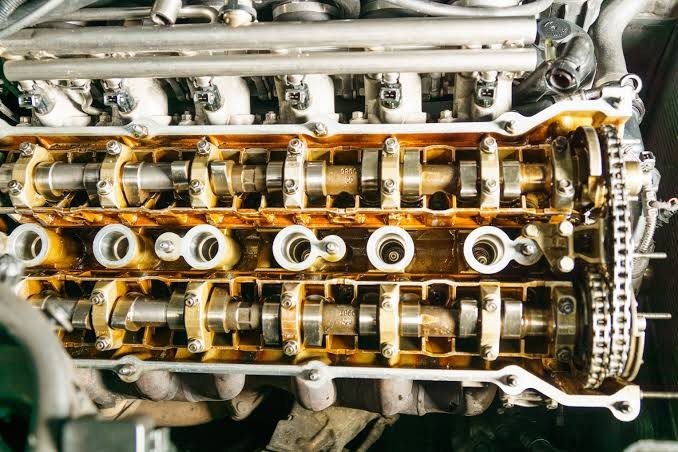If you have a P0016 code on your OBD-II scanner, it means that your car's engine has a problem with its timing. The crankshaft position sensor (CKP) and the camshaft position sensor (CMP) are not in sync with each other, and this can affect your car's performance, fuel efficiency, and emissions.
In this article, we will explain what the P0016 code means, what causes it, what symptoms it may produce, and how to diagnose and fix it.
What Is the P0016 Code?
The P0016 code is a generic powertrain code that indicates a correlation problem between the crankshaft position and the camshaft position for bank 1 sensor A. Bank 1 refers to the side of the engine that contains cylinder 1, and sensor A refers to the intake camshaft sensor.
The crankshaft position sensor and the camshaft position sensor are both responsible for monitoring the rotation and timing of the engine. The crankshaft position sensor detects the speed and position of the crankshaft, which is connected to the pistons. The camshaft position sensor detects the speed and position of the camshaft, which is connected to the valves.
The powertrain control module (PCM) uses the signals from these sensors to control the fuel injection and ignition systems. The PCM also compares the signals from these sensors to ensure that they are in sync with each other. If the PCM detects that the signals are out of alignment by a certain degree, it will set the P0016 code and turn on the check engine light.
What Causes the P0016 Code?
There are several possible causes for the P0016 code, such as:
- - A worn or stretched timing belt or chain
- - A faulty or misaligned timing belt or chain tensioner
- - A damaged or misaligned crankshaft or camshaft tone ring
- - A faulty or dirty crankshaft or camshaft position sensor
- - A damaged or corroded wiring harness or connector for the sensors
- - A software glitch or update issue in the PCM
What Symptoms Does the P0016 Code Produce?
Depending on the severity of the problem, the P0016 code may produce some of these symptoms:
- - The check engine light turns on
- - The engine cranks but does not start
- - The engine runs rough or stalls
- - The engine rattles near the harmonic balancer
- - The engine has reduced power or acceleration
- - The engine has poor fuel economy or increased emissions
How to Diagnose and Fix the P0016 Code?
To diagnose and fix the P0016 code, you will need an OBD-II scanner, a multimeter, a repair manual, and some basic tools. Here are some general steps to follow:
- Scan your car with an OBD-II scanner and confirm that you have the P0016 code. You may also have other related codes, such as P0017, P0018, or P0019. Note down all the codes and clear them from your scanner.
- Inspect your timing belt or chain for any signs of wear, damage, or misalignment. You may need to remove some covers or components to access it. Refer to your repair manual for specific instructions. If you find any problems with your timing belt or chain, replace it as necessary.
- Inspect your timing belt or chain tensioner for any signs of wear, damage, or misalignment. Make sure that it is properly adjusted and secured. If you find any problems with your tensioner, replace it as necessary.
- Inspect your crankshaft and camshaft tone rings for any signs of wear, damage, or misalignment. These are metal rings with teeth that are attached to the shafts and interact with the sensors. Make sure that they are clean and free from any debris or corrosion. If you find any problems with your tone rings, replace them as necessary.
- Inspect your crankshaft and camshaft position sensors for any signs of wear, damage, or contamination. Make sure that they are securely mounted and connected to their wiring harnesses. Use a multimeter to test their resistance and voltage according to your repair manual specifications. If you find any problems with your sensors, replace them as necessary.
- Inspect your wiring harnesses and connectors for any signs of damage or corrosion. Make sure that they are properly routed and secured. Use a multimeter to test their continuity and resistance according to your repair manual specifications. If you find any problems with your wiring harnesses or connectors, repair or replace them as necessary.
- Update or reflash your PCM software if needed. Sometimes, a software glitch or update issue can cause false codes or performance issues in your car. You may need a professional scan tool or a dealer service to do this step.
- Scan your car again with an OBD-II scanner and check if the P0016 code or any other related codes are gone. If not, you may need to perform further diagnosis or seek professional help.
Conclusion
The P0016 code is a common problem that can affect your car's engine performance, fuel efficiency, and emissions. It indicates that your crankshaft position and camshaft position are not in sync with each other. The possible causes include a worn or misaligned timing belt or chain, a faulty or dirty sensor, a damaged or corroded wiring harness, or a software glitch in the PCM.
To diagnose and fix the P0016 code, you need to inspect and test your timing belt or chain, your sensors, your wiring harnesses, and your PCM software. You may need to replace some components or update your PCM software if needed.

Comments (0)
Please login to join the discussion
Be the first to comment on this article!
Share your thoughts and start the discussion